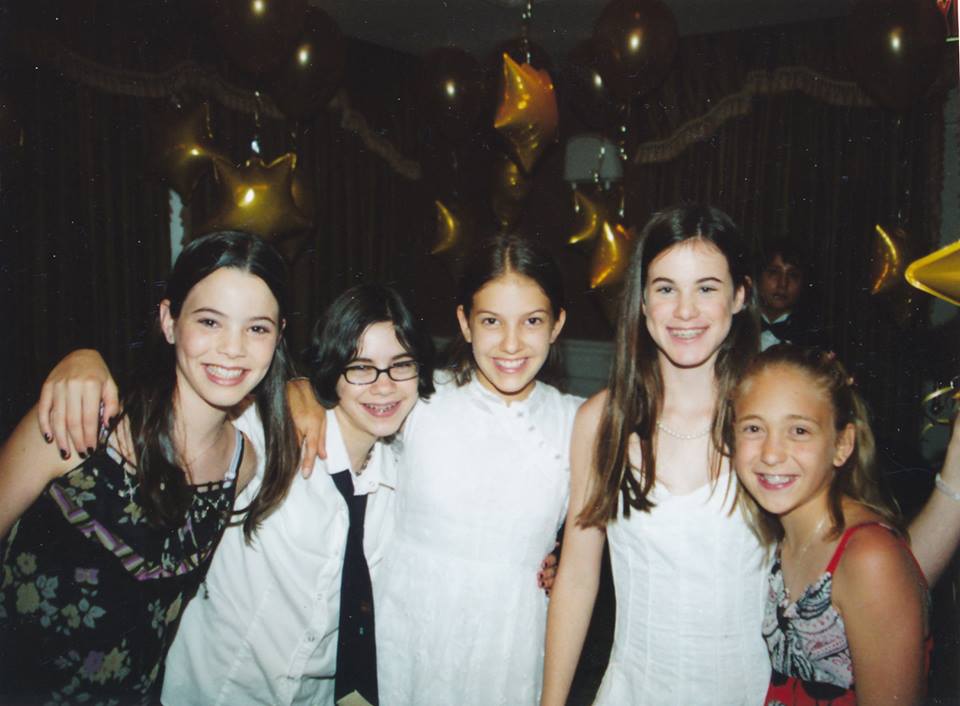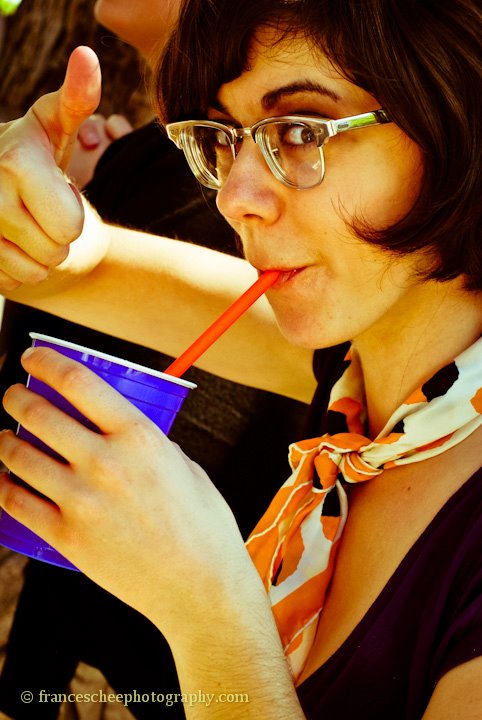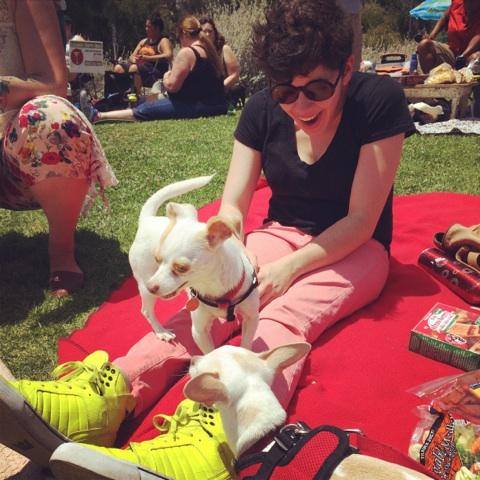feature image via shutterstock
In seventh grade, my choir teacher sent home instructions for our concert attire: black jumper, black tights, white button down, black dress shoes. She had outfitted generations of twelve-year-olds this way, and it seemed simple enough; half of the outfit even came school-issued. But her good intentions couldn’t save me from the nightmare of shoe shopping.
My shoes work hard. They have to be durable enough to withstand my heavy gait, sturdy enough to stay on without much help, and roomy enough to contain the ankle-high braces that straighten out my feet. Those are non-negotiable—when I went rogue and stopped wearing them for a few weeks in elementary school, my physical therapist said “do you want to walk when you’re 30? Put them back on.” They also double my shoe size. So the polite, precious Mary Janes my classmates bought for choir didn’t stand a chance. Instead, my mom and I compromised our way to a pair of clunky lace-ups straight out of the “orthopedic fashions” catalog at my surgeon’s office. I despised them so much that I refused to wear them for our first concert, opting last-minute to put black socks over the outside of my braces and wobble through.

What I really hated — the part that filled me with a warm, visceral embarrassment I couldn’t quite articulate — was that they were men’s shoes.
If you look at photos of me as a child, it’s clear The Gay was strong with me from the beginning. I shopped almost exclusively in the boys’ sections of Target and Gap Kids, not because I felt like a boy, but because girls’ clothes seemed flimsy and impractical by comparison. I couldn’t play basketball or sneak around my neighbors’ backyards (a questionable pastime, I realize now) as easily in them. I didn’t care about gender; I just wanted to feel comfortable enough to do the things I liked to do.
That comfort started to erode as I became aware of my body. Specifically, I faced the delightful one-two punch of standard-issue puberty confusion and reckoning with cerebral palsy. It wasn’t just the fancy term for why I walked differently than my friends; it was now a defect that decreased my body’s value. That understanding made it more shameful, dangerous, and real. I was never bullied in the traditional sense, but one thing I did grasp fairly quickly was that disability meant I was Being a Girl wrong.
Being a disabled woman often feels like choosing between these life paths:
- Object of Pity/Perpetual Child,
- Inspirational Overachiever,
- Fetish Toy, or
- Good Disabled Girl Who Makes Sure Everyone Likes Her.
You’re supposed to shoot for number four. One tried and true way to do that is to “still” be pretty. If you can show that you understand how a woman is supposed to look and embody that, you’ve got a much better shot at being taken seriously as a “real” person. You know you’ve succeeded when able-bodied people start patting you on the back: “I never would have guessed!” “Of course people still want to date you!” “You don’t look disabled!” (Able-bodied folks: for the love of God, please stop assuming these are the “compliments” we want to hear.) You’re rewarded for knowing your place, for keeping disability from looking too scary, for being “normal in every way except.”
As I entered my twenties with a growing sense of alienation from my body (and mild panic over whether I would ever have sex), I looked to femininity to prove that cerebral palsy wasn’t me. The men’s shoes necessarily remained and I still wasn’t going anywhere near a dress, but I knew how to put on makeup and coordinate my scarf with my purse, thanks. I grew out my hair, didn’t wear shorts for ten years to keep my weird legs covered, and you know what, I actually got pretty good at it. I loved being the kind of disabled woman who wasn’t going to let cerebral palsy make her ugly. Looking pretty made my disability feel small, something I could beat back or outsmart. It let me replace my disgust with control. It became my solution.

The story would end there if I felt like myself in those clothes. Plenty of disabled people (of every gender) do. There is nothing inherently weak or lesser about femininity, no matter what anyone tries to tell you. Despite my best efforts, though, it didn’t empower me; it made me feel like I was getting away with something. I knew that “myself” looked a lot closer to the eleven-year-old tomboy in those photos than the type of woman that, however successfully, I’d turned myself into. But I didn’t want to think about what that meant.
Disabled and masculine-of-center women deal with many of the same stereotypes: that we only look this way because we’re lazy, that we’ll never be “real” women, that we’re disgusting and unclean, that we know no one will ever want us. I worried that if gave up the femininity I’d worked so hard for, I’d just be giving in. As someone who has a lot of privilege, I thought it was my job to be the right kind of woman, even if I didn’t enjoy it.
I think I’d gotten it into my head that disability is always, on some level, supposed to feel bad. Like if I fought myself all the time, I was somehow doing it right.
And then I got tired.
Disabled people are always tired. That’s our big secret we’re not supposed to tell you. Exhaustion has no place in the narrative of “overcoming,” of “everyday heroism” that people love ascribing to us so much. We’re supposed to “fight our disabilities” with a smile, not a yawn. But the fact is that bodies that work like mine sap a lot of energy. And eventually you just don’t have the space for certain things. Personally, I didn’t want to do battle every time I got dressed anymore.

Queer fashion opened the door to desire. Once I started exploring places like DapperQ and Qwear and, yes, Autostraddle’s Fashion/Style tag — places that had always been available to me but I feared visiting out of guilt — I never wanted to stop. They reminded me that I had choices. I could attract attention on purpose. I could take risks. I could look a certain way because I wanted to—and that would be reason enough.
It’s counterintuitive to give a disabled body what it wants. Part of making it work in a world that isn’t built for you is not letting your body get out of hand, displaying your mastery over it. So much of that fight feels (and often is) necessary for survival. But what exactly would happen if, this one time, I just let my body be? In this body, the kind — one of the many kinds — that no one is supposed to want, it is revolutionary to feel good.
When my best friend got married a few months ago, she gave me another set of wardrobe instructions: “wear something you feel comfortable in and will use again.” So I decided to invest in a suit. I bought the pieces, got them tailored, but avoided putting on the full ensemble until the morning of—out of fear, I think, that I wouldn’t like what I saw as much as I hoped. I didn’t want my body to still feel wrong, and wasn’t sure how I’d handle it if it did. But when I finally did look in the mirror, the thought that overwhelmed my mind was yes. Yes, this is it. Yes, that’s me. Yes. I looked at my body and I said yes.

Walking from the church to our pre-reception spot, I got a lot of looks on the street. I’m sure it happens all the time — let’s be honest, you don’t see people like me walking around every day — but it’s such old hat by this point that I don’t even notice. That day I did, because the looks felt different. They weren’t because I have cerebral palsy; they were because I have cerebral palsy and I looked fucking great. “You,” my friend the bride said as we were crossing the street, “are one handsome lady.”
For the record, I was wearing Converse — which, in a nod to both my orthotics and my lesbian cultural heritage (thanks Ellen), I now wear to all formal events.







